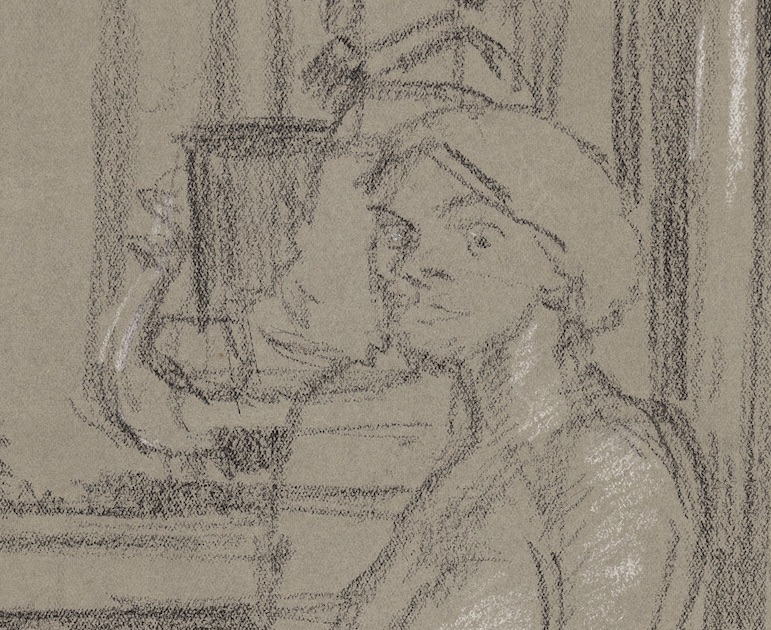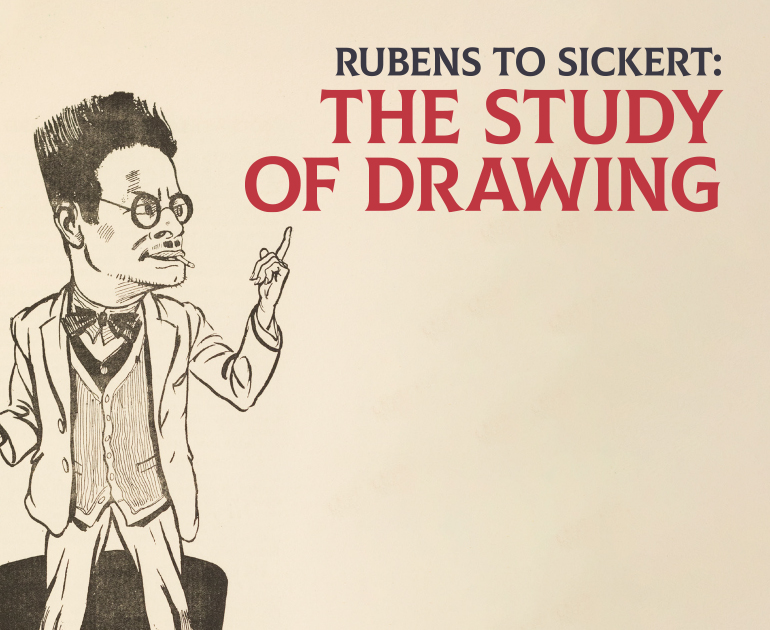Rubens to Sickert: The Study of Drawing
James Anthony Betts (1897 – 1980) led the School of Art at the University of Reading from 1933 – 1963. His most important legacy is the little-known collection of master drawings he assembled for the University in the 1950s. Much of this is now on public display for the first time.
Throughout Betts’ career, drawing the model from life was at the centre of the British art school curriculum. The works exhibited here reflect this focus and show how approaches to drawing shifted over time.
Betts’ lifetime was a period of great change in drawing practices. Accurate drawings of perfect bodies were increasingly abandoned. Life drawing was soon overshadowed by abstract experiments in line, form and colour.
This exhibition was made possible with a grant from the Weston Loan Programme with Art Fund and funding from Arts Council England awarded to Museums Partnership Reading via their National Portfolio Organisation programme.


Old Masters and the Body
Modern Masters
RCA to the Brook Green School
Ultra-Modern
Reading School of Art
Tutors and Students
Drawing After Betts
Artist in Residence
Old Masters of the Future
Activites
Acknowledgements

Old Masters and the Body
Professor James Anthony Betts began collecting drawings for the University of Reading School of Art in June 1953. He believed in access to art and that drawings were one of the best ways to introduce students to great artists.
The first drawings that Betts purchased were all Old Masters (1500s-1800s). He looked for drawings that would teach his students about different historical movements and schools.
As had been the case for centuries, Betts saw learning to draw the human body as the focus of art education. The first studies he collected all feature the human figure. They also showcase the flexibility of drawing as a medium. Examples range from independent works of art, to sketchbook pages, to studies for multi-figure paintings. They each use different drawing materials and techniques.
View the artworks and learn more here.

Modern Drawing
Betts started his collection with Old Masters, however, most of the works he amassed were by modern artists working around his own lifetime. He combined an interest in the stories behind the drawings he collected with an emphasis on variety, focused on artists drawing the body.
View the artworks and learn more here.

Modern Form: From the RCA to the Brook Green School
Betts formed his own sense of himself as a contemporary artist during his studies in the 1920s. He belonged to an up-and-coming group of ambitious young artists alongside Henry Moore (1898-1986) at the Royal College of Art and the Brook Green School of Drawing. Together, they were exposed to diverse approaches to figure drawing by experimental tutor, Leon Underwood (1890-1975).
View the artworks and learn more here.

Ultra-Modern: Betts in Sheffield
After finishing his studies at the Royal College of Art, Betts joined the teaching staff at the Sheffield College of Arts and Crafts in 1926. He also began exhibiting his work, focusing on drawing. The critical response was mixed.
Described as an “ultramodernist”, his nudes were likened to figures cut out of blocks of wood. Recalling Leon Underwood’s instruction in solidity and form, Betts defended his work as true creative art and the nude as “the basis of all good drawing”.
View the artworks and learn more here.

Reading School of Art (1933-1963): Walter Sickert and the Camden Group
It was the artist Walter Sickert (1860-1942) who most informed Betts teaching and collecting in Reading. The Betts Collection comprises 16 drawings by Sickert. They demonstrate principles that Betts adopted wholesale in his teaching, to the extent that he introduced an iron bedstead (a prop synonymous with Sickert) into the “life room” at Reading.
View the artworks and learn more here.

Tutors and Students
In 1952, Betts hired Harry Redman (1920-1944), a former pupil of Walter Sickert, as tutor in the School. He placed him in joint charge of the life room with Hubert Arthur Finney (1905-1991).
The use of an iron bedstead as a prop in the life drawing classroom is a mark of Sickert’s influence at the School. Back, and partially-obscured, views are also common among student work from this period.
View the artworks and learn more here.

Drawing After Betts
Claude Rogers (1907-1979) took over the running of Reading School of Art from Betts in 1963. He summarised the school in which he arrived:
“The teaching is limited (only last year has any abstract painting been done) – Sickerty. The syllabus and examination requirements are odd, besides being old-fashioned.”
Abstract art (which does not attempt to represent visual reality) had been a growing influence in British art education for some time. Elsewhere students were already encouraged to experiment freely with line, form and colour. Rogers hired new tutors to introduce different ideas about drawing to the curriculum. New courses, like that overseen by Rita Donagh (b.1939), moved students away from drawing the figure.
View the artworks and learn more here.

Artist in Residence
The University of Reading Art Collection in partnership with Reading Museum are hosting artist-in-residence, Saranjit Birdi, in a project entitled Drawing Diversity.
This project uses the exhibition to pose questions around diversity in drawing practices and to produce a new commission for the University of Reading Art Collection.
For more about other artist residencies, click here.

Old Masters of the Future
We are looking for “old masters of the future” – pictures of drawings made by you in connection to the exhibition. This was a phrase used by Professor James Anthony Betts, who oversaw the School of Art at the University of Reading from 1933 – 1963. His drawing collection comprises a significant part of the exhibition.
Betts’ collection focused on the human body, a subject at the centre of art education for centuries. So we would love to receive pictures of your drawings of people – be they self-portraits or sketches of family and friends.
They can be as abstract or as realistic as you like. How has the eld of drawing expanded today? Show us! We seek digital entries from artists and amateurs alike, across all ages. We can all be “old masters of the future”.
Click here to see the gallery of other entries.

Activities
Why not try drawing activities inspired by the Betts Collection?
Check out tips and tricks from Jerome. and Sae-Yeoun, our Drawing Micro-Residency artists?
Explore our School Resource based around the exhibition?
or
Take a tour of the physical exhibition?

Acknowledgements
This exhibition was made possible with a grant from the Weston Loan Programme with Art Fund and funding from Arts Council England awarded to Museums Partnership Reading as part of their National Portfolio Organisation activities.
Special thanks also go to the following organisations and individuals for their generous support and assistance in the creation of the exhibition:
- The Art Council Collection
- The British Museum
- The Henry Moore Foundation
- HM Government Indemnity Scheme
- The Henry Moore Foundation
- The Royal College of Art
- The family of Leon Underwood
- The family of James Anthony Betts
- Martin Andrews
- Clive Ashwin
- Anthony Harris
- Sue Hourigan
- Nigel Pilkington
- Elizabeth Sobczynski
- Michael Twyman
- Studio Noon